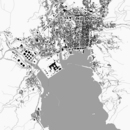Tsunami Workshops |
 |
| 2003 Workshop |
| Introduction |
| Motivation |
| NEES |
| Agenda |
| Participants |
| Workshop Presentations |
| 2002 Workshop |
| 2004 Workshop |
| 2006 Workshop |
Relation to NEES
The US National Science Foundation invested $80M+ to initiate a program called NEES (the Network for Earthquake Engineering Simulation) funded from the Major Research Equipment and Facility Construction Program (MREFC). NEES includes construction of large-scale shake tables, centrifuges, strong-walls/floors, field equipment, and a tsunami wave basin that is currently under construction at Oregon State University. All of the facilities and equipment are designed for shared use including data, for the entire earthquake engineering community and beyond. NSF has also includes the development of a system-integration infrastructure and resources in cyberspace. All of the constructions and development will be completed by September 2004. See:
NSF now plans to invest further for research operation with the use of the NEES facilities, equipment, and IT, starting October 2004. This is a significant opportunity for the community to make substantial and rapid advances in critical research areas that we could not have done previously. The research program associated with this mode of NEES is now called “the Grand Challenge.” The community collaboration and shared use of resources coincide with our spirit of tsunami scenario simulation. In fact, our scenario simulation can be one of the Grand Challenges, although I think that our simulation should be a higher-level concept than the NEES Grand Challenge: i.e. the NEES program would be a part of our scenario simulation efforts.
In relation to NEES, it is possible to include other earthquake effects in our scenario simulations. A scenario set-up would be setup a “hypothetical” coastal community, which includes a port or/and harbor. There are many critical problems associated with marine structural and geotechnical engineering, e.g. quay wall stability, liquefaction, coastal piles, etc. For a given seismic signal and ground shakes (near-source tsunamis, of course), we can conduct structural and geotechnical aspects of simulations (both numerically and experimentally, perhaps using other NEES facilities). The structural and geotechnical simulations would undoubtedly affect the tsunami simulations as well as the warning transmission and evacuation simulations. What we wish to achieve by this sort of simulations is to develop improved and integrated systems for damage prediction and assessment, and for the mitigation planning, for an area affected both by tsunamis and also strong ground motions.